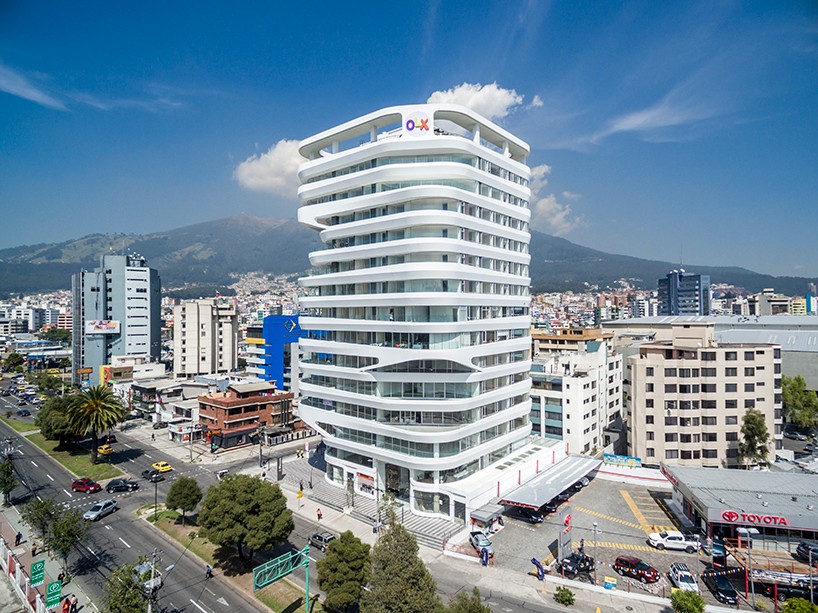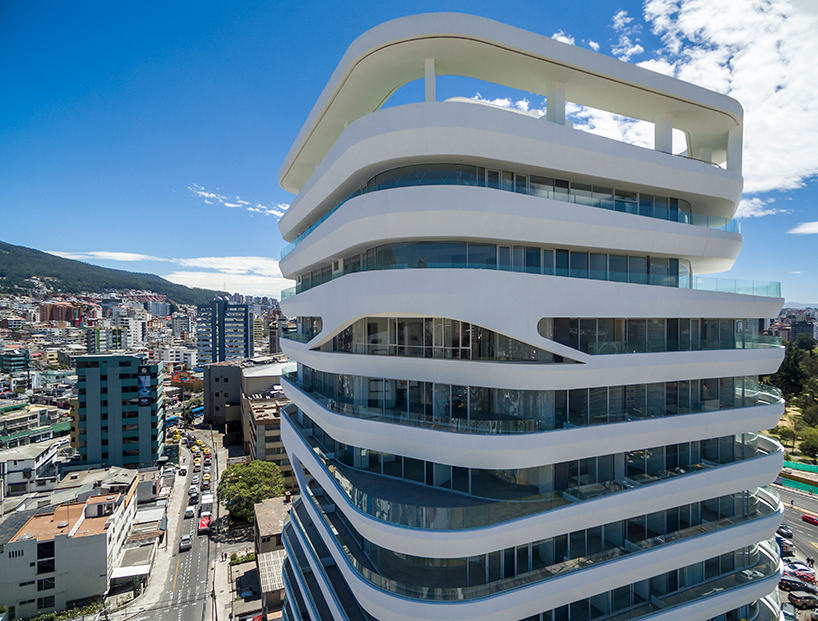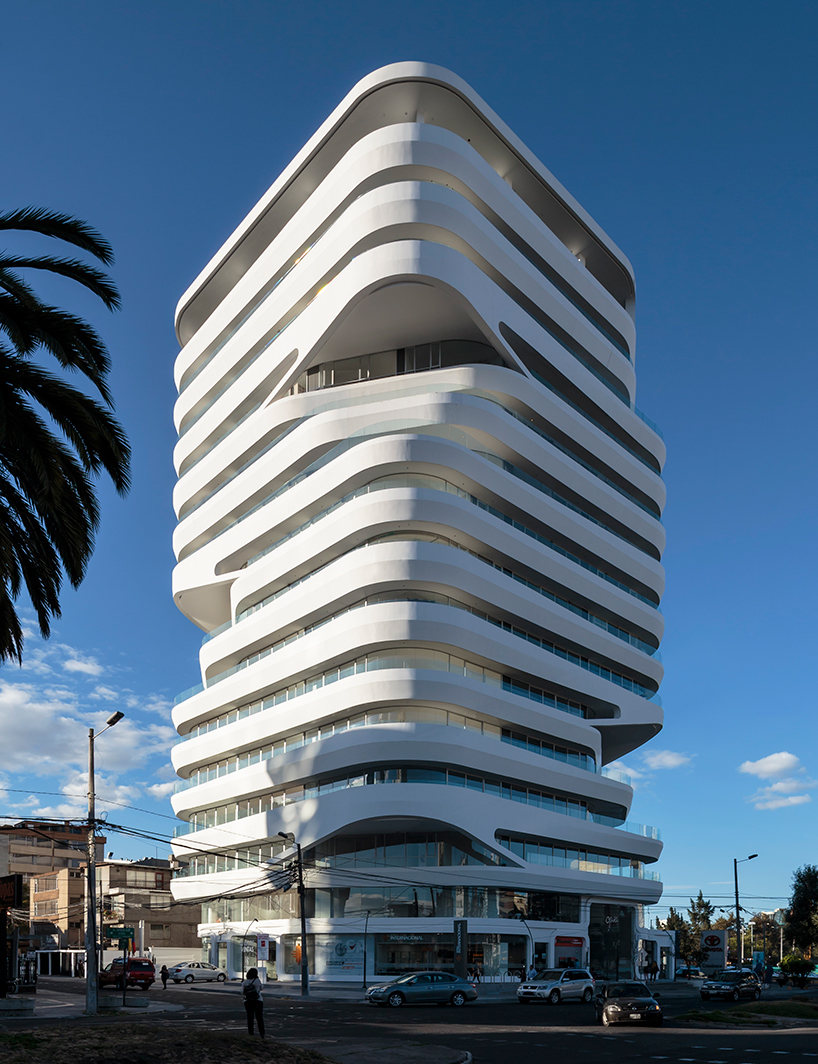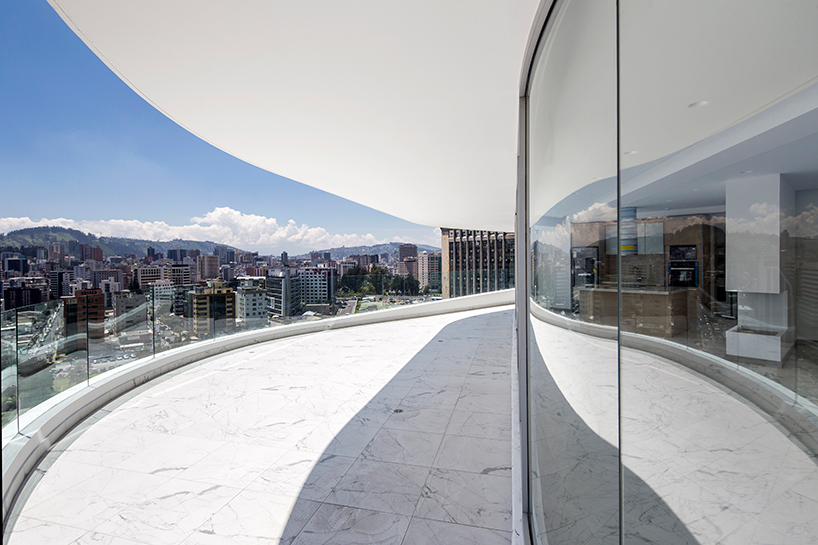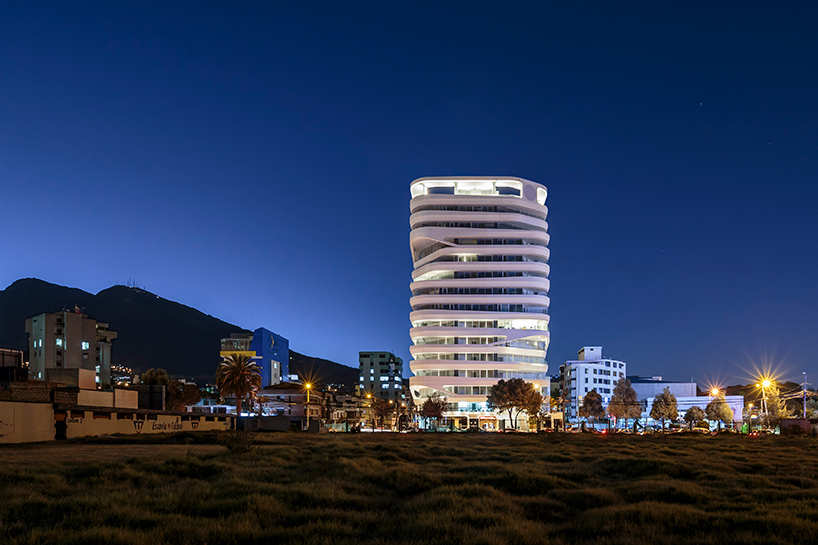Gaia Building, Ecuador
Completed at the end of 2016, the Gaia Building has been heralded as a new landmark for the Ecuadorian capital of Quito. Designed by Leppanen + Anker Arquitectos, the building uses an innovative moulded façade system.
Creating 15,000 sq. m of mixed-use space, and topped with a large roof garden, the 15-storey tower provides a combination of commercial, office and residential units.
The building uses a repeating pattern to reduce the number of moulds used in forming the distinctive glass fibre reinforced concrete (GFRC) façade.
The benefits of this sinuous façade material include the efficiency and ease of its installation. A system of adjustable metallic connections allows easy alignment of the complex forms, and the 4m panels can be reused.
As the first new construction in the neighbourhood, the intention behind the design was to combine diverse elements to produce a ‘play of light and shadow of the surroundings’. Carved around the perimeter are deep balconies, intended to help reduce solar gain allow large glazing sections to be used without reducing the efficiency of the passively-controlled internal spaces.
[All images © Sebastián Crespo]
[edit] Find out more
[edit] Related articles on Designing Buildings Wiki
Featured articles and news
RTPI leader to become new CIOB Chief Executive Officer
Dr Victoria Hills MRTPI, FICE to take over after Caroline Gumble’s departure.
Social and affordable housing, a long term plan for delivery
The “Delivering a Decade of Renewal for Social and Affordable Housing” strategy sets out future path.
A change to adoptive architecture
Effects of global weather warming on architectural detailing, material choice and human interaction.
The proposed publicly owned and backed subsidiary of Homes England, to facilitate new homes.
How big is the problem and what can we do to mitigate the effects?
Overheating guidance and tools for building designers
A number of cool guides to help with the heat.
The UK's Modern Industrial Strategy: A 10 year plan
Previous consultation criticism, current key elements and general support with some persisting reservations.
Building Safety Regulator reforms
New roles, new staff and a new fast track service pave the way for a single construction regulator.
Architectural Technologist CPDs and Communications
CIAT CPD… and how you can do it!
Cooling centres and cool spaces
Managing extreme heat in cities by directing the public to places for heat stress relief and water sources.
Winter gardens: A brief history and warm variations
Extending the season with glass in different forms and terms.
Restoring Great Yarmouth's Winter Gardens
Transforming one of the least sustainable constructions imaginable.
Construction Skills Mission Board launch sector drive
Newly formed government and industry collaboration set strategy for recruiting an additional 100,000 construction workers a year.
New Architects Code comes into effect in September 2025
ARB Architects Code of Conduct and Practice available with ongoing consultation regarding guidance.
Welsh Skills Body (Medr) launches ambitious plan
The new skills body brings together funding and regulation of tertiary education and research for the devolved nation.
Paul Gandy FCIOB announced as next CIOB President
Former Tilbury Douglas CEO takes helm.
UK Infrastructure: A 10 Year Strategy. In brief with reactions
With the National Infrastructure and Service Transformation Authority (NISTA).






